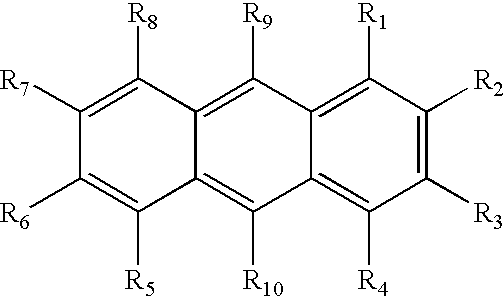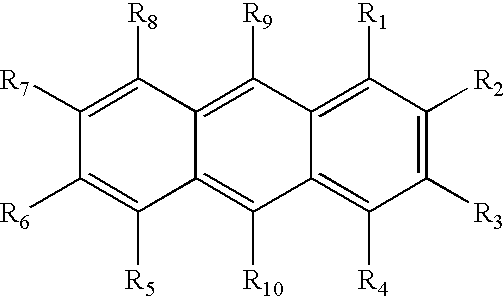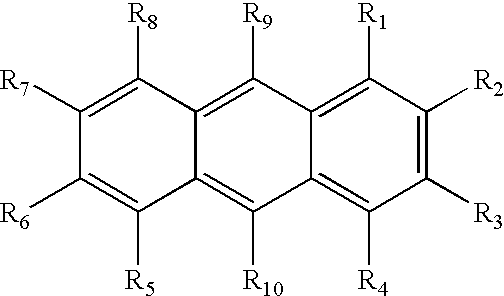Genetic hypermutability of plants for gene discovery and diagnosis
a technology of gene discovery and diagnosis, applied in the field of genetic isolation and manipulation of weeds and gene targets for the discovery of herbicide-tolerant weeds, can solve the problems of resistance weeds, and high risk of crop yield reduction
- Summary
- Abstract
- Description
- Claims
- Application Information
AI Technical Summary
Problems solved by technology
Method used
Image
Examples
example 1
[0105] Isolation of DNA Markers for Haplotype Analysis of Weeds for Genomic Identification of Herbicide Resistant Biotypes.
[0106] Polymorphic DNA markers are important for mapping the location of genes involved in the biochemical pathway of a given phenotype. Polymorphic markers are useful for the unequivocal identification of weeds that are part of a heterogeneous family that are resistant and susceptible to certain types of herbicides. These markers can be used for the rapid diagnosis of subtypes that are herbicide resistant to certain classes of chemicals to guide farmers on choosing appropriate herbicide management systems for crop management. One such example for using DNA markers to identify HR plants is the isolation of genomic DNA from field specimens of the Conyza canadensis species where approximately 15% of the field populations are naturally resistant to glyphosate, the active ingredient in Roundup.RTM. herbicide (VanGessel, M. (2000) "Group G / 9 Resistant Horseweed (Cony...
example 2
[0108] Haplotype Analysis of Heterogeneous Populations of Plants for Diagnosis of Biotypes for Herbicide Resistance.
[0109] DNA from the genomes of HR and HS weeds are isolated from field specimens and plated in semisolid medium or in soil treated with active levels of herbicide. Seedlings from plants that are able to grow in the presence of active herbicide levels are classified as herbicide resistant (HR). Those that are not able to grow in the presence of active herbicide levels are classified as herbicide susceptible (HS). DNAs from both classes are analyzed at the genome level using up to ten polymorphic DNA markers to identify haplotype patterns that are associated with susceptibility or resistance using methods described in Example 1. This approach has been used to identify DNA markers in Glycine max and Conyza canadensis for the identification of haplotypes that are associated with certain phenotypes such as but not limited to flower color, herbicide resistance, etc. This app...
example 3
[0110] Generation of Glyphosate-Susceptible Conyza canadensis
[0111] Naturally occurring HR weeds such as Conyza canadensis are useful for identifying genes that are capable of allowing certain weeds to become resistant to a class of compounds in an attempt to uncover the mechanism(s) of herbicide-resistance. Here we teach the use of employing mutagenesis strategies to glyphosate-resistant (GR) Conyza to generate glyphosate-susceptible (GS) strains that are useful for gene discovery. Briefly, GR Conyza canadensis seedlings are exposed to mutagens such as, but not limited to, mismatch repair inhibitors, chemical mutagens, radiation, etc., and seeds are plated on to solid Murashige and Skoog (MS) media in 150 mm dishes with and without active levels of herbicide. One such example is the use of the small molecule inhibitor of mismatch repair called Morphocene.TM., and other chemical inhibitors of mismatch repair as described in PCT Publication No. WO 02 / 054856 (which is incorporated her...
PUM
| Property | Measurement | Unit |
|---|---|---|
| pH | aaaaa | aaaaa |
| pH | aaaaa | aaaaa |
| time | aaaaa | aaaaa |
Abstract
Description
Claims
Application Information
 Login to View More
Login to View More - R&D
- Intellectual Property
- Life Sciences
- Materials
- Tech Scout
- Unparalleled Data Quality
- Higher Quality Content
- 60% Fewer Hallucinations
Browse by: Latest US Patents, China's latest patents, Technical Efficacy Thesaurus, Application Domain, Technology Topic, Popular Technical Reports.
© 2025 PatSnap. All rights reserved.Legal|Privacy policy|Modern Slavery Act Transparency Statement|Sitemap|About US| Contact US: help@patsnap.com



